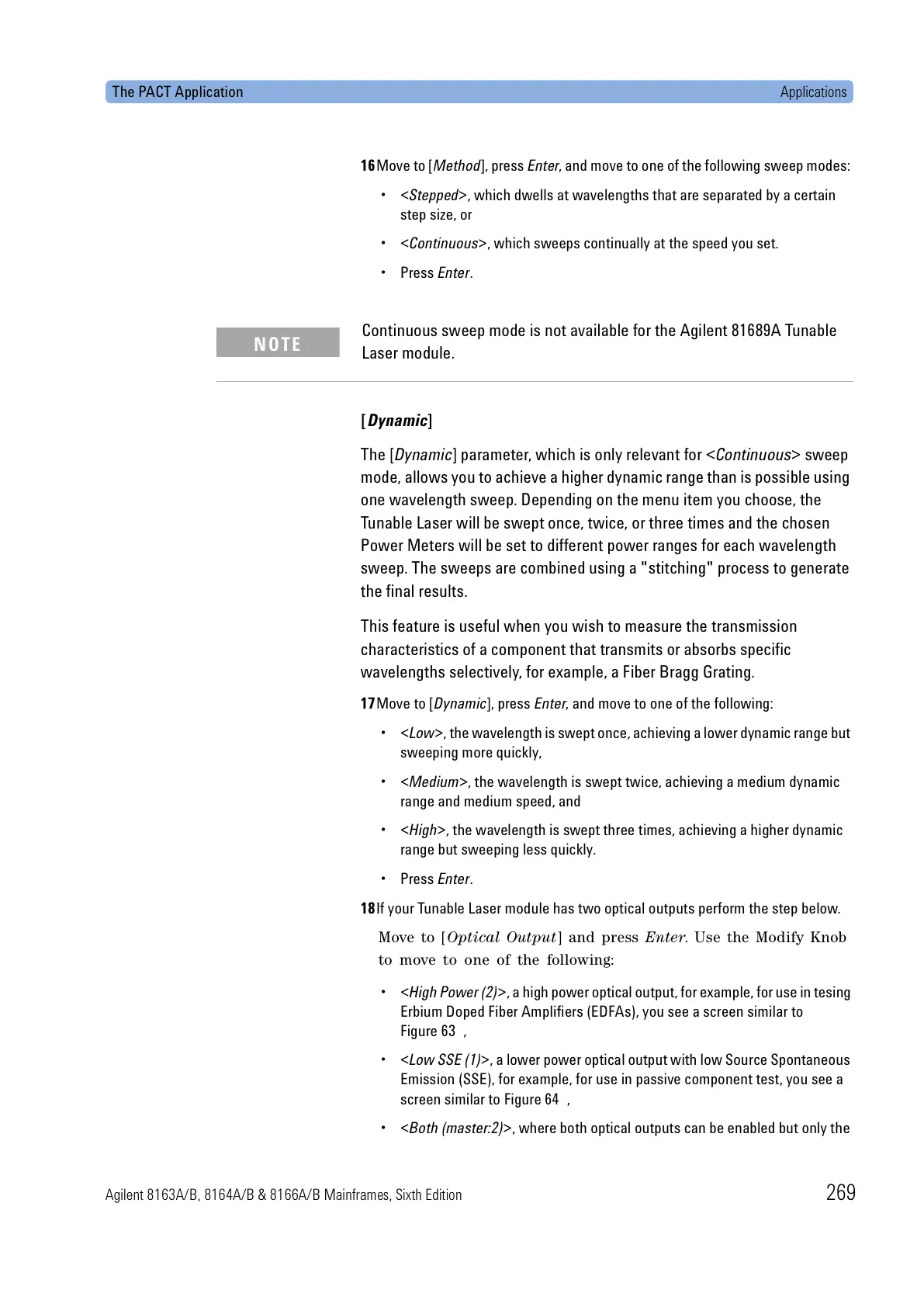The PACT Application Applications
Agilent 8163A/B, 8164A/B & 8166A/B Mainframes, Sixth Edition 269
16Move to [Method], press Enter, and move to one of the following sweep modes:
•<Stepped>, which dwells at wavelengths that are separated by a certain
step size, or
•<Continuous>, which sweeps continually at the speed you set.
• Press Enter.
[Dynamic]
The [Dynamic] parameter, which is only relevant for <Continuous> sweep
mode, allows you to achieve a higher dynamic range than is possible using
one wavelength sweep. Depending on the menu item you choose, the
Tunable Laser will be swept once, twice, or three times and the chosen
Power Meters will be set to different power ranges for each wavelength
sweep. The sweeps are combined using a "stitching" process to generate
the final results.
This feature is useful when you wish to measure the transmission
characteristics of a component that transmits or absorbs specific
wavelengths selectively, for example, a Fiber Bragg Grating.
17Move to [Dynamic], press Enter, and move to one of the following:
•<Low>, the wavelength is swept once, achieving a lower dynamic range but
sweeping more quickly,
•<Medium>, the wavelength is swept twice, achieving a medium dynamic
range and medium speed, and
•<High>, the wavelength is swept three times, achieving a higher dynamic
range but sweeping less quickly.
• Press Enter.
18If your Tunable Laser module has two optical outputs perform the step below.
Move to [Optical Output] and press Enter. Use the Modify Knob
to move to one of the following:
•<High Power (2)>, a high power optical output, for example, for use in tesing
Erbium Doped Fiber Amplifiers (EDFAs), you see a screen similar to
Figure 63 ,
•<Low SSE (1)>, a lower power optical output with low Source Spontaneous
Emission (SSE), for example, for use in passive component test, you see a
screen similar to Figure 64 ,
•<Both (master:2)>, where both optical outputs can be enabled but only the
Continuous sweep mode is not available for the Agilent 81689A Tunable
Laser module.
NOTE

